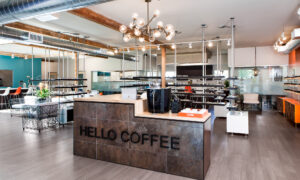By Mark Wright, OD, FCOVD,
and Carole Burns, OD, FCOVD

April 29, 2020
What might the “new normal” look like when we get back into the office?
At the beginning of each day, each doctor and staff member are screened for COVID-19 signs or symptoms before entering the office. Anyone who exhibits a sign or symptom will be asked to go home and contact their primary care physician.
The office is disinfected multiple times during the day. Any surface touched by a patient is disinfected immediately.
The practice front door is locked to prevent people who have not been screened from entering the office. When a patient with an appointment arrives in the parking lot, they stay in their car and call into the practice to announce their arrival. A staff member will meet them in the parking lot to take their temperature (utilizing a non-contact thermometer), ask a few COVID screening questions, and make sure the patient has a face mask and gloves (if they did not bring their own, then they will be provided).
Patients exhibiting any COVID-19 signs or symptoms are to be rescheduled and asked to contact their primary care physician (PCP). (The staff member should also contact their PCP.) The patient’s screening results are entered into the patient’s digital record.
Once a patient has passed the initial screening, they stay in their car and are contacted when the practice is ready to see them. When entering the office, the patient is taken directly to pretesting.
Other Articles to Explore
Adult patients are told when scheduling their appointment that due to safety protocols and social distancing, anyone accompanying them should stay in the car unless they need assistance with mobility or communication. Anyone assisting will be registered at the front desk including contact information. When a minor patient is scheduled for an examination, one adult may accompany them.
To maintain social distancing, the practice is divided into zones. One patient is permitted in one zone at a time. A patient moves to the next zone when the patient in front of them moves on to the next zone. The optical is divided into multiple zones depending on the size of the optical.
Frames are disinfected before a patient touches them and before they are placed back on the frame boards. When selecting eyewear, the patient points to the frames they would like to try, then the optician with gloves, puts them on a tray for the patient.
Checkout protocols are created with the least amount of physical contact.
Tomorrow, the cycle repeats.




























